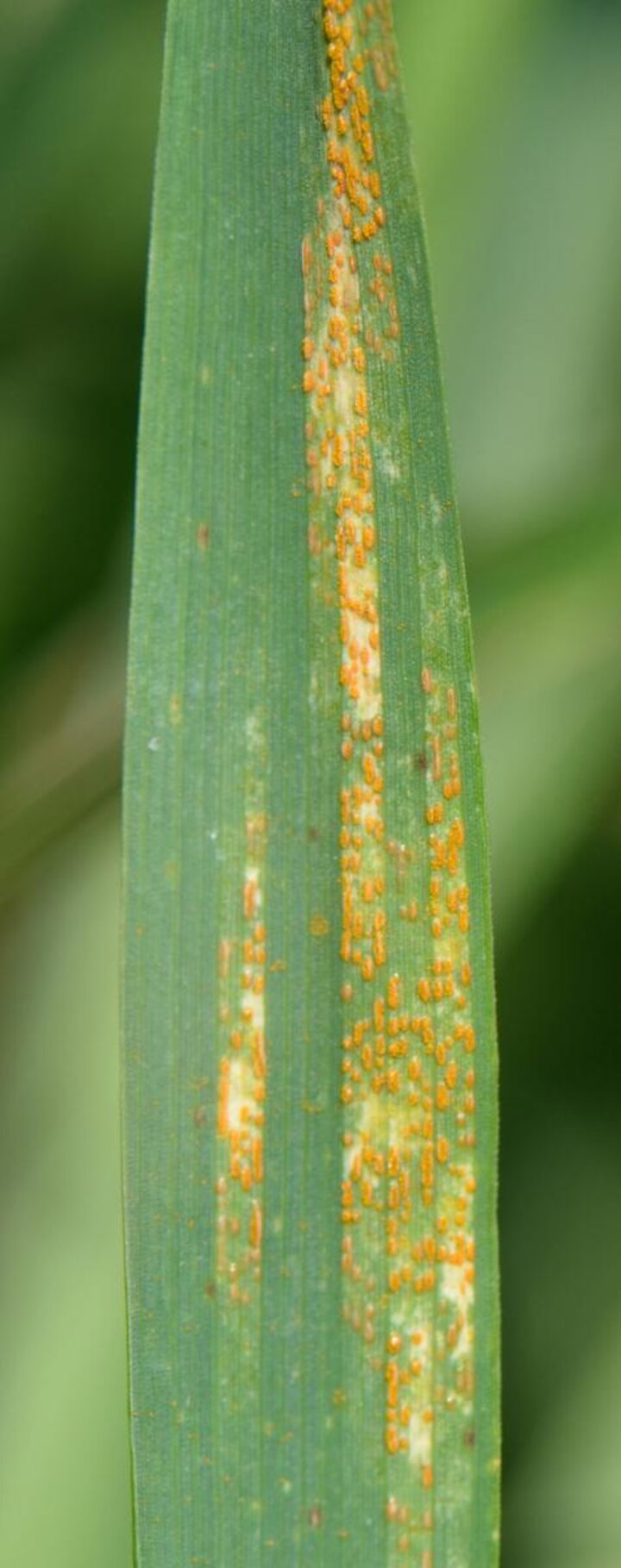
On March 30, leaf rust was found in several wheat fields in Nuckolls County in south central Nebraska. Severity was trace (Figure 1), but the rust was found in every field surveyed. Presence of leaf rust in Nebraska this early in the growing season suggests it may have overwintered or is a result of unusually warm winter temperatures which resulted in earlier than normal movement of spores from southern states into our region.
Because of the presence of leaf rust in Nebraska and Kansas and stripe rust in Kansas and Colorado, there is an elevated risk for development of these diseases to damaging levels starting in April. It is recommended that growers scout their fields for early disease detection and be prepared to apply a fungicide if presence of stripe rust or leaf rust or both is confirmed. Current and forecast weather conditions are favorable for rust development.
Wheat Rust Scouting and Treatment
When scouting, look in the lower as well as the upper canopy of the wheat crop. Stripe rust pustules are yellow and appear on the upper leaf surface. On young leaves before the jointing stage, stripe rust usually does not form stripes (Figure 2). Stripes form on older leaves (Figure 3). Leaf rust pustules are orange-brown and are randomly distributed on the upper leaf surface (Figure 4).
The decision to spray is made based on the presence of disease, susceptibility of the wheat variety, and weather conditions. (Moisture, cool to moderate temperatures, and wind favor development and spread of leaf and stripe rust.) Because leaf and stripe rust fungi can develop new races, varieties known to have good resistance can become susceptible if new races emerge. Even if you have planted a variety known to have good resistance, consider a fungicide application as a second line of defense.
Due to the early onset of rust, it may be necessary to make an early season fungicide application followed by a flag leaf application. The early season application is best timed around the Feekes 5 (leaf sheaths strongly erected) to the Feekes 6 growth stage, when the first node on the main tillers is visible or detectable. Flag leaf timing (50% to 100% flag leaf emergence) is aimed at protecting the flag leaf because, compared to the other leaves, it contributes the most to grain fill.
When planning your treatment strategy, take into account the yield potential and price of wheat. If the yield potential is low, consider applying a low cost fungicide product such as a generic at the early season timing and a higher cost fungicide at the flag leaf timing. A list of fungicides and their efficacy ratings on various wheat diseases is provided in a table developed by the multistate committee NCERA-184: Management of Small Grain Diseases.

Figure 2. Stripe rust pustules on a young leaf – note the absence of stripes. (Figures 2-4 by Stephen Wegulo)

Figure 3. Stripe rust pustules arranged in stripes on an older leaf

Figure 4. Leaf rust pustules randomly scattered on the leaf
